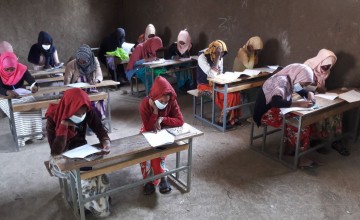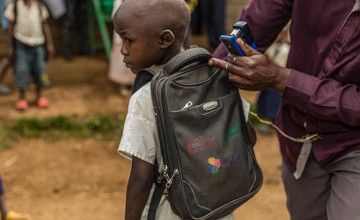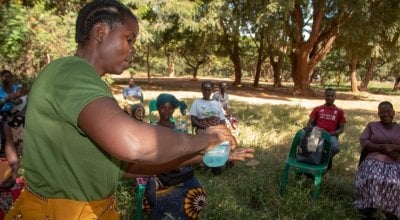
Knowledge Hub
As the world continues to recover from the disturbances of the Covid-19 pandemic, resolving challenges stemming from its impact on education remains a task for many governments.
At the peak of the crisis, 1.6 billion children and young people around the world were affected by school closures. Covid-19 has particularly affected poorer and more vulnerable communities more severely, with risks of increases in lower attainment, loss of key skills and school dropouts being key concerns.
Educational Outcomes
Data is beginning to show the unfortunate effects of the Covid-19 pandemic on academic attainment in many poorer countries and communities, which risk damaging the futures of many.
School closures have impacted countries across the board, however according to UNICEF, schools in Latin America and the Caribbean have been disproportionately affected and make up half of the top 20 countries with the longest full school closures. This amounts to nearly 98 million school children and presents particular challenges for countries such as Haiti, where nearly four million children were affected by school closures. In Haiti, only an estimated two-thirds of adults can read and write, which means threats to their already fragile education system can have severe long lasting consequences.
According to research in Pakistan, school closures have already demonstrably impacted test scores and affected broader economic outcomes. Pakistan’s economy has been estimated to be suffering a loss of $67-155 billion due to learning losses from Covid-19. Sadly, an estimated 930,000 Pakistani children are expected to have permanently dropped out of school due to school closures. Over in East Africa, children in Kenya lost 3.5 months of learning due to the pandemic, which threatens the economic future of the country.
Similar results have been seen in wealthier countries such as the Netherlands, in which according to one study, students made ‘little to no progress’ while learning from home, with learning loss being most pronounced in students from disadvantaged homes.
Budget inequalities grow for students in developing countries
It goes without saying that many developing countries struggle to properly fund education, however Covid-19 has forced many governments to slash education budgets in response to the economic toll of the pandemic.
According to a joint World Bank and UNESCO report, two thirds of low and lower middle income countries (such as Ethiopia and Bangladesh) have cut their public education budgets since the beginning of the pandemic. In contrast, only a third of upper-middle and high-income countries have reduced their budgets.
Education budgets declined after the onset of the Covid-19 pandemic in 65 percent of low- and lower middle- income countries compared to only 33 percent of high- and upper-middle-income countries.

Widening the gap between rich and poor?
One of the unfortunate realities the pandemic demonstrated was the continuation of the widening gap between rich and poor. The world’s richest people recouped their pandemic losses within just nine months according to research from Oxfam. According to the report it would take more than a decade for the world’s poorest to recover from the economic impacts of Covid-19.
Unfortunately, inequalities in education are beginning to make themselves apparent and threaten to drive a further wedge between richer and poorer communities. Young people are one of the most vulnerable to the pandemic, as the pandemic negatively drives disparities in nutrition, health and loss of livelihoods of their parents.
Pre-pandemic, 258 million primary and secondary school aged students were out of school. The Learning Poverty rate, defined as when a child cannot read and understand a simple story text by age 10, has been further exasperated by Covid-19. In low and middle income countries around 53% of children are considered to be in learning poverty, with the number rising to 80% in the most impoverished countries. Because of covid-19, a further 72 million primary school age children are at risk of being pushed into learning poverty.
Discrepancies in access to technology and resources threaten the educational futures of young people in poorer or rural communities. In a study in Ethiopia, pandemic related school closures have hugely impacted poor or rural children, who lack technology to study remotely.

What is Concern doing?
Since the start of the pandemic, Concern staff have worked to support some of the world's poorest communities amid the effects of coronavirus, particularly within education.
Education is an essential tool in development and is key to alleviating poverty and improving health and the economic reality for all children.
The poorest were hit hardest by Covid-19 and are still struggling to recover from the pandemic. Interruptions in education, food and water insecurity and lack of resources have disproportionately affected the poor.
In 2020, our education programmes directly benefited 0.18 million people and 0.52 million indirectly. In total, our programmes reached 735,458 children. Our work on education focuses on three pillars:
- Increasing access to education
- Improving the quality of teachers and learning literacy through the Early Grade Reading Assessment (EGRA) tool
- Improving child well-being by providing safe and encouraging learning environments
With Covid-19 disproportionately impacting the poorest, now is the time to commit to providing more support for young people in vulnerable communities to reverse the negative consequences of the pandemic.
Other ways to help
Donate now
Give a one-off, or a monthly, donation today.
Join an event
From mountain trekking to marathon running, join us for one of our many exciting outdoor events!
Buy a gift
With an extensive range of alternative gifts, we have something to suit everybody.
Leave a gift in your will
Leave the world a better place with a life-changing legacy.
Become a corporate supporter
We partner with a range of organisations that share our passion and the results have been fantastic.
Create your own fundraising event
Raise money for Concern by organising your own charity fundraising event.





